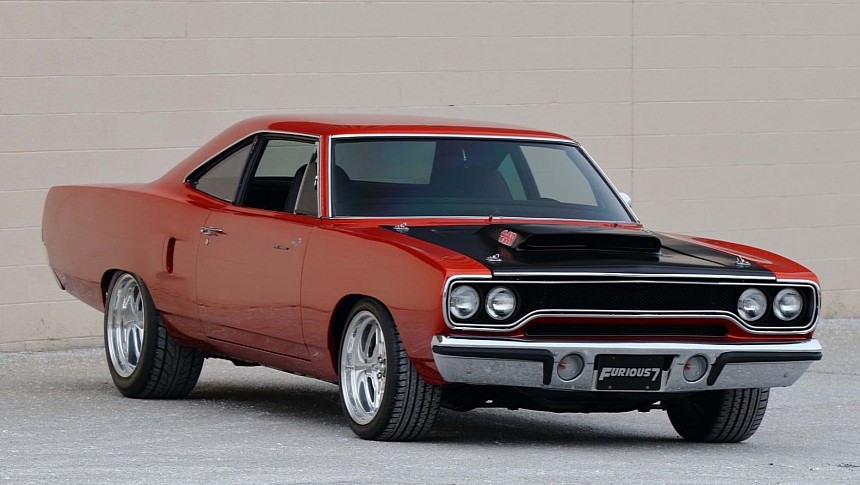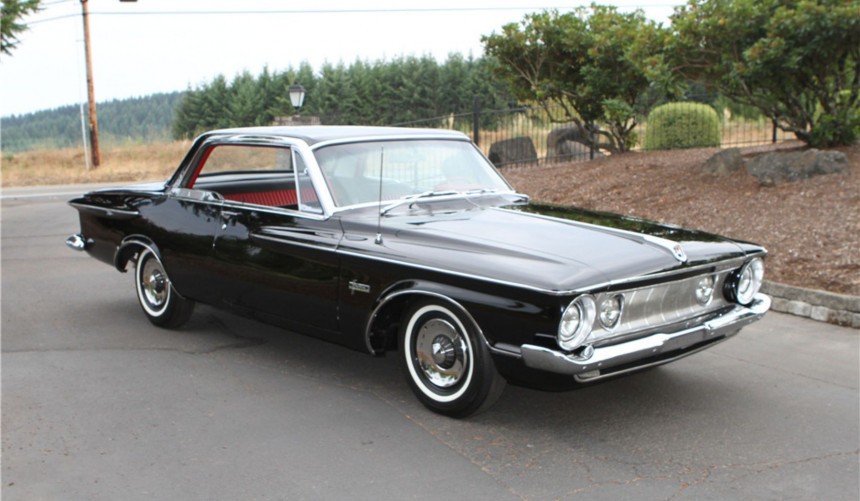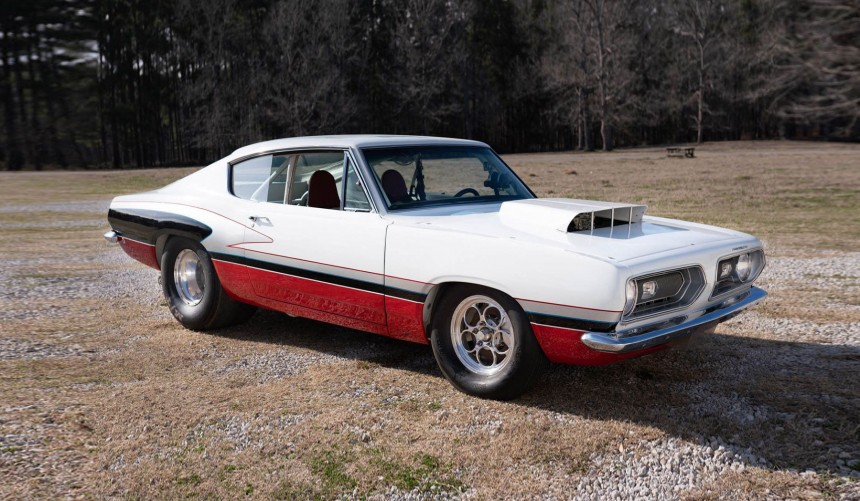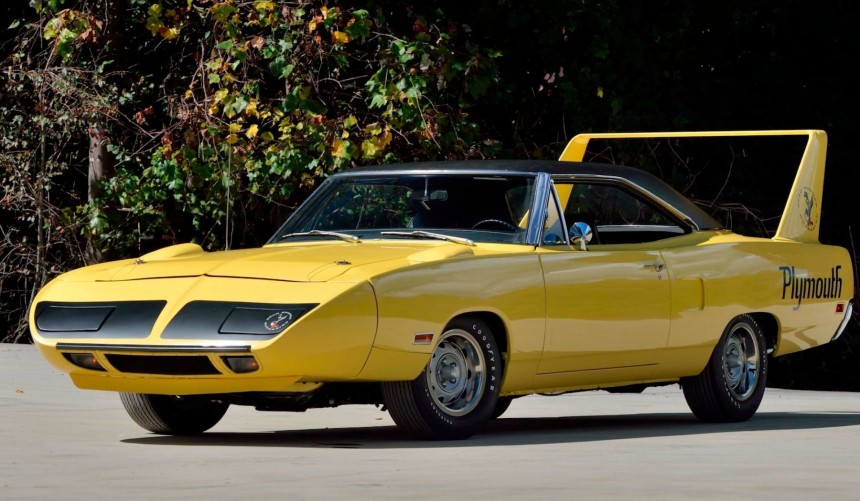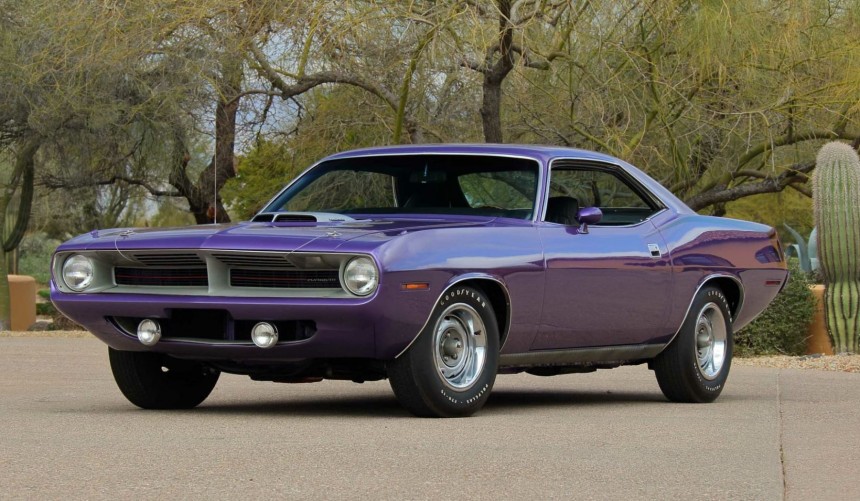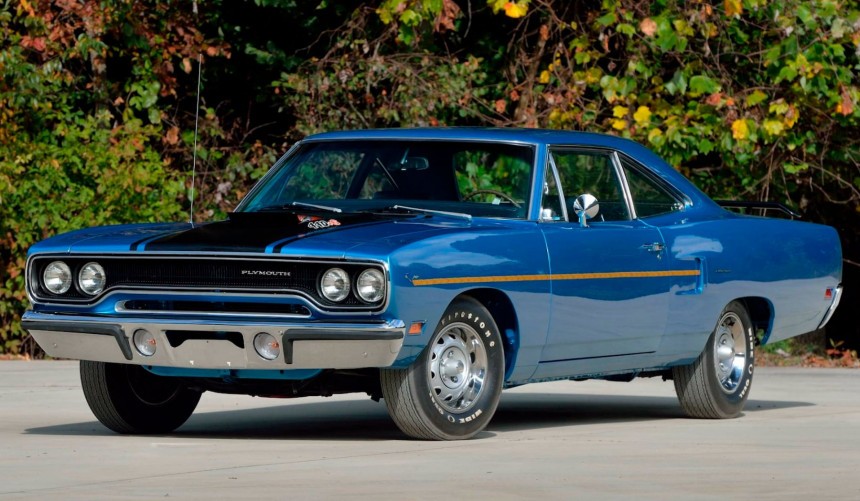Though discontinued more than two decades ago, Plymouth continues to live on in the hearts and minds of muscle car enthusiasts thanks to its legendary models.
The Plymouth story started in the summer of 1928 when Chrysler introduced a new brand aimed at competing with Ford and Chevrolet in the affordable vehicle segment.
It proved to be an excellent decision, as Plymouth models kept the Chrysler Corporation alive during the Great Depression years.
Its golden age came during the 1960s and 1970s when it produced some of the greatest muscle cars of all time.
Unfortunately, the 1980s and 1990s proved disastrous for Plymouth, and in 2001, Chrysler announced the end of the iconic brand.
Though gone, Plymouth hasn't been forgotten, thanks to the legendary muscle cars that donned the brand's badges. Even half a century after their introduction, these mean machines are still revered by multiple generations of car enthusiasts.
Based on Chrysler's latest B-body platform, the third-generation Fury was unleashed on public roads during the 1962 model year.
Even if it was an all-new design, the downsized model initially angered the brand's loyal following since the Sport Fury sub-model was gone.
Fortunately, Plymouth listened to the pleas and reintroduced the Sport Fury in the second part of the model year. But that wasn't the only good news for the brand's performance-loving fans.
Plymouth also unleashed a new performance package called Super Stock. As the name implies, it was conceived to turn the Sport Fury into a legitimate drag racing weapon in the super stock classes, but interestingly enough, it kept the car street-legal.
Appearance-wise, the 1962 Super Stock wasn't much different from a standard Sport Fury, but under the hood, it featured the mighty 413-ci (6.7-liter) Max Wedge, which made either 410 or 420 hp, depending on the compression ratio version chosen.
The drag strip-oriented model returned in 1963 and 1964, packing the enlarged 426-ci (7.0-liter) version of the mighty "Orange Monster" rated at 415 or 420 hp (again, depending on the compression ratio).
During a production run that lasted only about two and a half years, only around 100 Plymouth Sport Fury Super Stocks were built.
Though Ford's legendary Mustang is credited with coining the pony car segment, Plymouth's rivaling Barracuda was actually introduced a few weeks earlier.
However, the segment was called "pony" and not "fish" or "Barracuda" because the Mustang outsold its main competitor by a large margin.
For the 1967 model year, Plymouth introduced a thoroughly redesigned Barracuda that aimed to outsell the 'Stang. While that didn't happen, the second generation fared better against its rival, and, more importantly, it gave Mopar fans another Super Stock legend.
Developed with help from Hurst Performance and available during the 1968 model year, the B029 Super Stock was a non-street-legal drag weapon that differed from any other second-gen 'Cudas in two major ways.
Firstly, it received a lightweight treatment that included a fiberglass front end, hood, and a stripped-down interior.
Secondly, it was the only second-gen 'Cuda to leave the factory with a 425-hp 426 HEMI under the hood.
One of the main reasons why none of the A-body 'Cudas received the mighty Elephant motor was the cramped engine bay. Nevertheless, Hurst engineers managed to squeeze it inside the B029 Super Stock by modifying the shock towers.
This legendary drag strip-oriented model was a one-year affair, and only around 50 to 70 units were produced.
During the 1960s, Chrysler's Dodge and Plymouth divisions were involved in a heated battle with Ford and Mercury for NASCAR supremacy.
In the second part of the decade, Ford was constantly beating its rivals thanks to the arodinamically-efficient shape of its Torino.
The Mopar camp finally answered back in 1969 with the Dodge Charger Daytona, but it was no match for the improved Torino Talladega.
Then, for the 1970 season, the Daytona project evolved into the Plymouth Superbird, an aero car that finally managed to beat Ford.
The Superbird program also gave birth to one of Plymouth's most legendary street-legal muscle cars.
Based on the Road Runner, the road car featured all the extravagant aero improvements of its race siblings, including the bespoke nose and humongous rear wing.
To fulfill the homologation requirement that dictated a minimum run of 1,920 street-legal Superbirds, Plymouth made the car available with any of its performance-oriented big-block V8s: the 440-ci (7.2-liter), 375-hp Super Comando, the 390-hp Six-Barrel 440 and, of course, the 425-hp HEMI.
As I mentioned earlier, no street-legal Barracuda had left the factory with the HEMI under its hood. That finally changed with the arrival of the third generation, launched in 1970.
Though the standard model was still powered by the Slant-6, performance versions of the pony car now had a large enough engine bay to accommodate Mopar's most potent big-block V8s.
When equipped with the legendary Elephant engine, the third-generation 'Cuda was the fastest factory-built muscle car that money could buy.
According to multiple independent tests conducted during the period, the HEMI 'Cuda consistently ran the quarter mile in the low 13s.
Though the third generation survived on the market until 1974, the HEMI-powered version was only available in 1970 and 1971.
Most units produced during that period were hardtop coupes, but 21 convertibles also left the factory equipped with the 426.
Today, any genuine HEMI 'Cuda is extremely expensive. However, the rare convertibles take the notion to another level, as their value exceeds the 4 million mark.
Based on the Belvedere, the first GTX emerged in 1967 and was marketed as an upscale "gentleman's muscle car."
The model was completely redesigned a year later but maintained its upscale flair, while those looking for an affordable alternative could now opt for the new Road Runner.
Essentially a GTX without the upscale interior and trims, the Road Runner was all about performance, which helped it become a best-seller.
Both models were available with the 440 and 426 HEMI, but while the first V8 was standard on the GTX, the Road Runner's base engine was a 335-hp 383-ci (6.3-liter) version of Chrysler's RB.
By 1970, the Road Runner became Plymouth's best-selling performance model and one of the best-selling muscle cars ever produced.
Its sibling's success negatively impacted the sales of the GTX, but it was still one of the most impressive muscle cars of the era.
Both models were redesigned in 1971, but the new shape was far less attractive. With the rising insurance race and a looming oil crisis, neither managed to replicate the success of the previous generation.
Today, the second-generation GTX and first-generation Road Runner remain some of the most sought-after models from the golden age of muscle cars.
It proved to be an excellent decision, as Plymouth models kept the Chrysler Corporation alive during the Great Depression years.
Its golden age came during the 1960s and 1970s when it produced some of the greatest muscle cars of all time.
Unfortunately, the 1980s and 1990s proved disastrous for Plymouth, and in 2001, Chrysler announced the end of the iconic brand.
Though gone, Plymouth hasn't been forgotten, thanks to the legendary muscle cars that donned the brand's badges. Even half a century after their introduction, these mean machines are still revered by multiple generations of car enthusiasts.
1962-1964 Plymouth Sport Fury Super Stock
Even if it was an all-new design, the downsized model initially angered the brand's loyal following since the Sport Fury sub-model was gone.
Fortunately, Plymouth listened to the pleas and reintroduced the Sport Fury in the second part of the model year. But that wasn't the only good news for the brand's performance-loving fans.
Plymouth also unleashed a new performance package called Super Stock. As the name implies, it was conceived to turn the Sport Fury into a legitimate drag racing weapon in the super stock classes, but interestingly enough, it kept the car street-legal.
Appearance-wise, the 1962 Super Stock wasn't much different from a standard Sport Fury, but under the hood, it featured the mighty 413-ci (6.7-liter) Max Wedge, which made either 410 or 420 hp, depending on the compression ratio version chosen.
The drag strip-oriented model returned in 1963 and 1964, packing the enlarged 426-ci (7.0-liter) version of the mighty "Orange Monster" rated at 415 or 420 hp (again, depending on the compression ratio).
During a production run that lasted only about two and a half years, only around 100 Plymouth Sport Fury Super Stocks were built.
1968 Plymouth Barracuda B029 Super Stock
However, the segment was called "pony" and not "fish" or "Barracuda" because the Mustang outsold its main competitor by a large margin.
For the 1967 model year, Plymouth introduced a thoroughly redesigned Barracuda that aimed to outsell the 'Stang. While that didn't happen, the second generation fared better against its rival, and, more importantly, it gave Mopar fans another Super Stock legend.
Developed with help from Hurst Performance and available during the 1968 model year, the B029 Super Stock was a non-street-legal drag weapon that differed from any other second-gen 'Cudas in two major ways.
Firstly, it received a lightweight treatment that included a fiberglass front end, hood, and a stripped-down interior.
Secondly, it was the only second-gen 'Cuda to leave the factory with a 425-hp 426 HEMI under the hood.
One of the main reasons why none of the A-body 'Cudas received the mighty Elephant motor was the cramped engine bay. Nevertheless, Hurst engineers managed to squeeze it inside the B029 Super Stock by modifying the shock towers.
This legendary drag strip-oriented model was a one-year affair, and only around 50 to 70 units were produced.
1970 Plymouth Superbird
In the second part of the decade, Ford was constantly beating its rivals thanks to the arodinamically-efficient shape of its Torino.
The Mopar camp finally answered back in 1969 with the Dodge Charger Daytona, but it was no match for the improved Torino Talladega.
Then, for the 1970 season, the Daytona project evolved into the Plymouth Superbird, an aero car that finally managed to beat Ford.
The Superbird program also gave birth to one of Plymouth's most legendary street-legal muscle cars.
Based on the Road Runner, the road car featured all the extravagant aero improvements of its race siblings, including the bespoke nose and humongous rear wing.
To fulfill the homologation requirement that dictated a minimum run of 1,920 street-legal Superbirds, Plymouth made the car available with any of its performance-oriented big-block V8s: the 440-ci (7.2-liter), 375-hp Super Comando, the 390-hp Six-Barrel 440 and, of course, the 425-hp HEMI.
1970-1971 Plymouth HEMI 'Cuda
Though the standard model was still powered by the Slant-6, performance versions of the pony car now had a large enough engine bay to accommodate Mopar's most potent big-block V8s.
When equipped with the legendary Elephant engine, the third-generation 'Cuda was the fastest factory-built muscle car that money could buy.
According to multiple independent tests conducted during the period, the HEMI 'Cuda consistently ran the quarter mile in the low 13s.
Though the third generation survived on the market until 1974, the HEMI-powered version was only available in 1970 and 1971.
Most units produced during that period were hardtop coupes, but 21 convertibles also left the factory equipped with the 426.
Today, any genuine HEMI 'Cuda is extremely expensive. However, the rare convertibles take the notion to another level, as their value exceeds the 4 million mark.
1968-1970 Plymouth Road Runner and GTX
The model was completely redesigned a year later but maintained its upscale flair, while those looking for an affordable alternative could now opt for the new Road Runner.
Essentially a GTX without the upscale interior and trims, the Road Runner was all about performance, which helped it become a best-seller.
Both models were available with the 440 and 426 HEMI, but while the first V8 was standard on the GTX, the Road Runner's base engine was a 335-hp 383-ci (6.3-liter) version of Chrysler's RB.
By 1970, the Road Runner became Plymouth's best-selling performance model and one of the best-selling muscle cars ever produced.
Its sibling's success negatively impacted the sales of the GTX, but it was still one of the most impressive muscle cars of the era.
Both models were redesigned in 1971, but the new shape was far less attractive. With the rising insurance race and a looming oil crisis, neither managed to replicate the success of the previous generation.
Today, the second-generation GTX and first-generation Road Runner remain some of the most sought-after models from the golden age of muscle cars.
